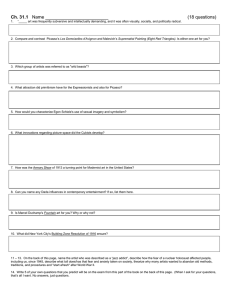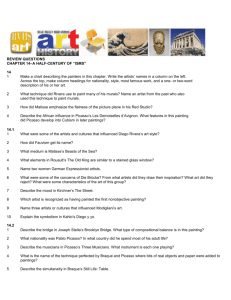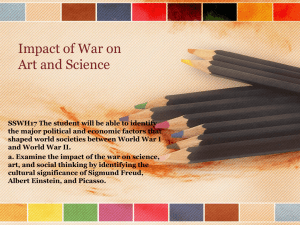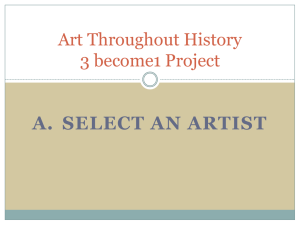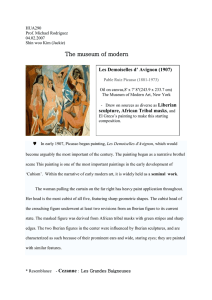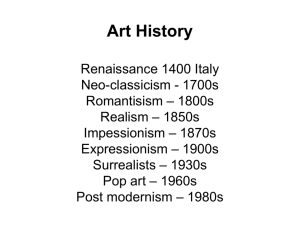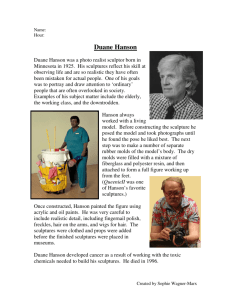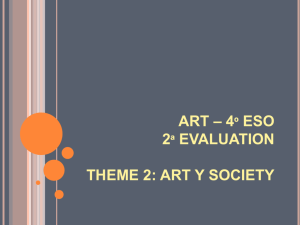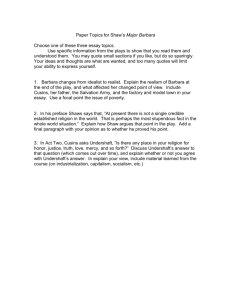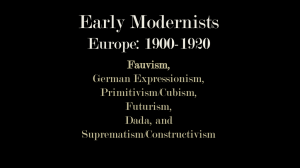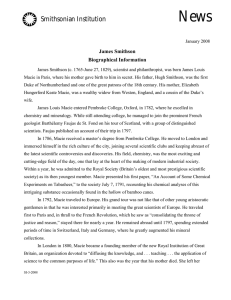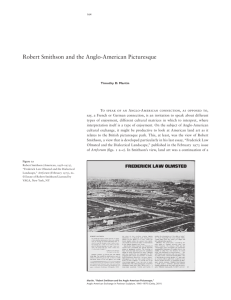Test #1 Study Guide
advertisement
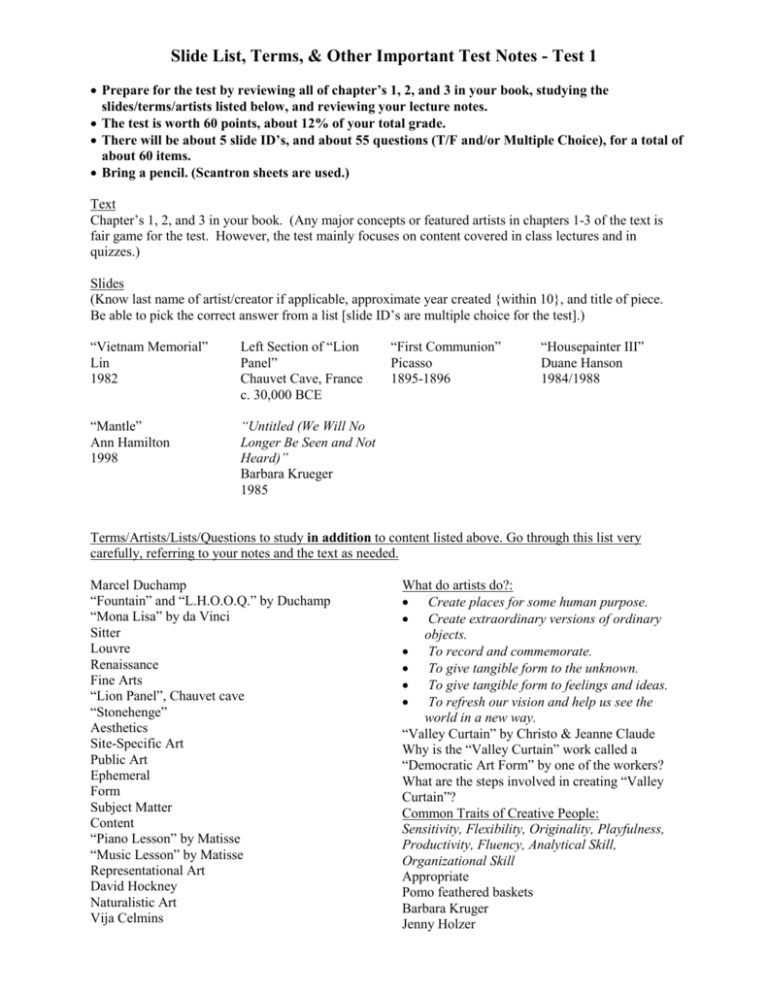
Slide List, Terms, & Other Important Test Notes - Test 1
Prepare for the test by reviewing all of chapter’s 1, 2, and 3 in your book, studying the
slides/terms/artists listed below, and reviewing your lecture notes.
The test is worth 60 points, about 12% of your total grade.
There will be about 5 slide ID’s, and about 55 questions (T/F and/or Multiple Choice), for a total of
about 60 items.
Bring a pencil. (Scantron sheets are used.)
Text
Chapter’s 1, 2, and 3 in your book. (Any major concepts or featured artists in chapters 1-3 of the text is
fair game for the test. However, the test mainly focuses on content covered in class lectures and in
quizzes.)
Slides
(Know last name of artist/creator if applicable, approximate year created {within 10}, and title of piece.
Be able to pick the correct answer from a list [slide ID’s are multiple choice for the test].)
“Vietnam Memorial”
Lin
1982
Left Section of “Lion
Panel”
Chauvet Cave, France
c. 30,000 BCE
“Mantle”
Ann Hamilton
1998
“Untitled (We Will No
Longer Be Seen and Not
Heard)”
Barbara Krueger
1985
“First Communion”
Picasso
1895-1896
“Housepainter III”
Duane Hanson
1984/1988
Terms/Artists/Lists/Questions to study in addition to content listed above. Go through this list very
carefully, referring to your notes and the text as needed.
Marcel Duchamp
“Fountain” and “L.H.O.O.Q.” by Duchamp
“Mona Lisa” by da Vinci
Sitter
Louvre
Renaissance
Fine Arts
“Lion Panel”, Chauvet cave
“Stonehenge”
Aesthetics
Site-Specific Art
Public Art
Ephemeral
Form
Subject Matter
Content
“Piano Lesson” by Matisse
“Music Lesson” by Matisse
Representational Art
David Hockney
Naturalistic Art
Vija Celmins
What do artists do?:
Create places for some human purpose.
Create extraordinary versions of ordinary
objects.
To record and commemorate.
To give tangible form to the unknown.
To give tangible form to feelings and ideas.
To refresh our vision and help us see the
world in a new way.
“Valley Curtain” by Christo & Jeanne Claude
Why is the “Valley Curtain” work called a
“Democratic Art Form” by one of the workers?
What are the steps involved in creating “Valley
Curtain”?
Common Traits of Creative People:
Sensitivity, Flexibility, Originality, Playfulness,
Productivity, Fluency, Analytical Skill,
Organizational Skill
Appropriate
Pomo feathered baskets
Barbara Kruger
Jenny Holzer
Duane Hanson
Abstract Art
Nonobjective Art
Nonrepresentational Art
Mark Rothko
Physical Context
Historical Context
“Guernica” by Picasso
Iconography
Iconoclasm
Iconoclast
Large Buddha, Bamiyan, Afghanistan
Icon
Andy Goldsworthy
Earthworks
Pigment
Louis Bourgeois
Preliminary Work
Sky Spaces
Patron
James Turrell
“Sky Space”
Roden Crater
Pantheon, Rome
Commission
Installation Art
Style may be associated with:
An entire culture
A particular time and place
A particular group of artists
An individual artist
A distinct phase of an individual artist
Bill Viola
Video Installation
Robert Smithson
“Spiral Jetty”
Dan Flavin
Cai Guo Qiang (know his work in the sense of its
historical context, form, subject matter, and
content)
Artistic Style
Installation
What is the historical context of “Fountain”, by
Marcel Duchamp?
What is the historical context of Barbara
Kruger’s work?
What is the historical context of “Guernica” by
Picasso?
Describe the artistic style of Dan Flavin.
Themes of Art:
Many common themes in art can be found
throughout history. A theme is like a thread
running through the entire history of art.
•
Arts of Daily Life
•
The Sacred Realm
•
Politics and the Social Order (Barbara
Kruger)
•
The Here and Now
•
Invention and Fantasy
•
Art and Nature (Andy Goldsworthy, de
Maria, Smithson)
•
Art and Art
Walter de Maria’s “Lightning Field”, 1977
Robert Smithson’s “Spiral Jetty”, 1970
Slide ID Example (Pay close attention to all elements in the answer – elements are mixed and
interchanged. You need to pick the right answer, or select “d. None of the above” if it isn’t listed.):
Imagine you are shown the slide depicting the Vietnam War Memorial:
____
1.
a.
b.
c.
d.
“Vietnam Memorial”, Picasso, 1500
“First Communion”, Lin, 1895-1896
“First Communion”, Duane Hanson, 1984/1988
None of the above.
(The answer for the above slide ID is “d.”, none of the above.)
